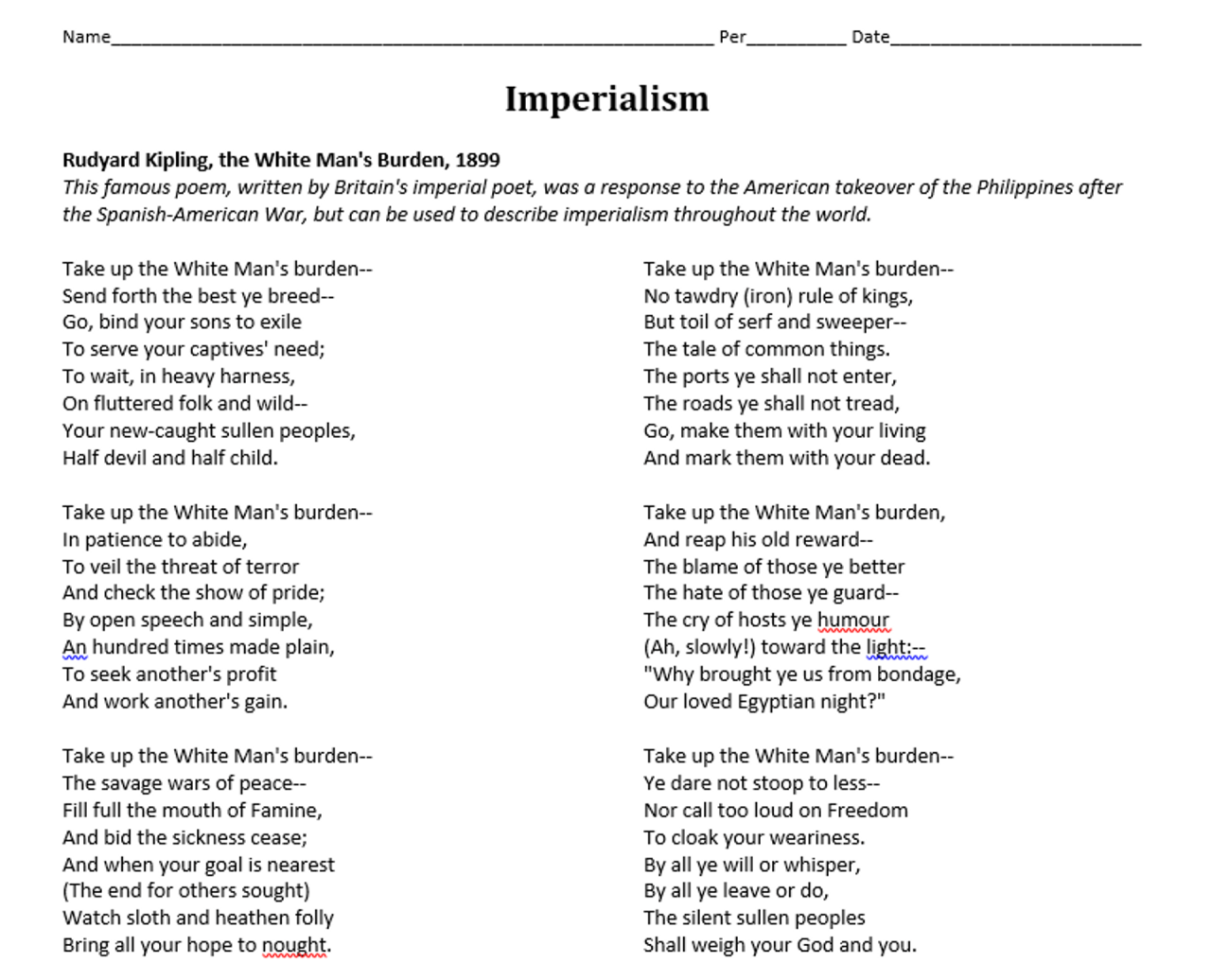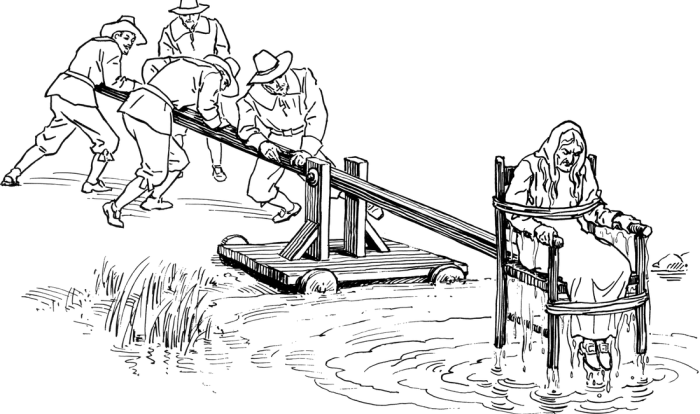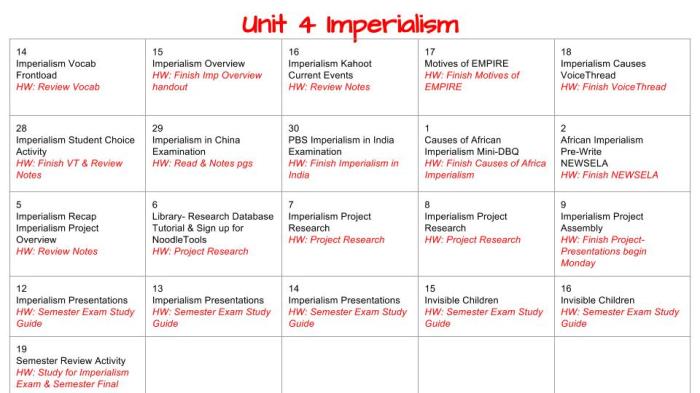The white man’s burden” student worksheet answer key pdf – Embark on an enlightening journey with our comprehensive “The White Man’s Burden” Student Worksheet Answer Key PDF. This meticulously crafted resource delves into the historical context, motivations, and far-reaching implications of this influential concept.
Uncover the origins of the phrase “the white man’s burden” and trace its evolution over time. Explore the motivations and beliefs that fueled its widespread acceptance, setting the stage for the ensuing discussion.
Historical Context: The White Man’s Burden” Student Worksheet Answer Key Pdf

The phrase “the white man’s burden” emerged in the late 19th century, reflecting the widespread belief among European and American elites that white people had a moral obligation to “civilize” and “uplift” non-Western societies. This concept was rooted in the Enlightenment’s emphasis on progress and the belief in the superiority of European culture and values.
The phrase was first popularized by the British poet Rudyard Kipling in his 1899 poem “The White Man’s Burden.” In the poem, Kipling argues that white people have a duty to bring the benefits of civilization to “lesser races,” even if this requires the use of force.
The poem resonated with many Europeans and Americans, who saw it as a justification for their imperial ambitions.
Manifest Destiny and Imperialism, The white man’s burden” student worksheet answer key pdf
The concept of “the white man’s burden” played a significant role in justifying American expansionism and imperialism in the late 19th and early 20th centuries. Many Americans believed that it was their destiny to spread their civilization and values across the globe, and that this was a moral imperative.
- The United States used the ideology of “the white man’s burden” to justify its annexation of Hawaii, the Philippines, and Puerto Rico.
- The phrase was also used to rationalize American interventions in Latin America, such as the Spanish-American War.
Racial and Cultural Superiority
The concept of “the white man’s burden” was based on the assumption of white racial and cultural superiority. White people were seen as more advanced, civilized, and intelligent than non-Western peoples.
- This belief was reinforced by scientific racism, which claimed that there was a hierarchy of races, with white people at the top.
- The ideology of white supremacy shaped social and political policies both domestically and internationally.
Modern Interpretations and Criticisms
In recent decades, the concept of “the white man’s burden” has been widely criticized as racist and paternalistic. Critics argue that it is a tool of oppression that has been used to justify the exploitation of non-Western peoples.
- Many postcolonial scholars have argued that “the white man’s burden” is a form of cultural imperialism that seeks to impose Western values and institutions on non-Western societies.
- Contemporary movements and organizations, such as Black Lives Matter and the decolonization movement, challenge the assumptions of “the white man’s burden” and advocate for the self-determination of non-Western peoples.
Quick FAQs
What is the historical context of “the white man’s burden”?
The phrase emerged in the late 19th century, reflecting the belief that white Western nations had a moral obligation to “civilize” and uplift non-Western societies.
How did “the white man’s burden” justify American expansionism?
The ideology provided a rationale for the United States to acquire and control territories overseas, often at the expense of indigenous populations.
What were the racial assumptions underlying “the white man’s burden”?
The concept reinforced notions of white supremacy and the inferiority of other races, leading to discriminatory policies and social hierarchies.


